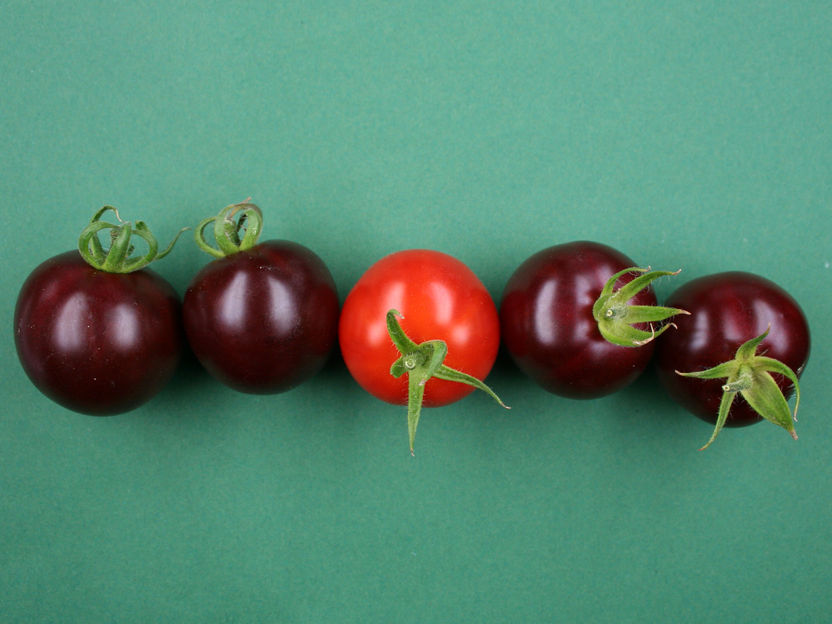Purple tomatoes thanks to red beet pigment
Genetic Engineering methods of producing substances in specially developed plant production systems will play an important role in the future, especially in drug manufacturing
Advertisement
Researchers at the Leibniz Institute of Plant Biochemistry (IPB) in Halle have recently created purple tomatoes using genetic engineering methods. To do so, they inserted the genes responsible for the biosynthesis of betanin into the plants and activated these in the ripening fruit. Betanin isn't normally produced by tomatoes, but rather extracted from red beets and used as a natural food dye. These sorts of Genetic Engineering methods of producing substances in specially developed plant production systems will play an important role in the future, especially in drug manufacturing. The production of vaccines and antibodies using plants is already a very active field of research.

Purple tomatoes compared to unmodified fruit (center).
Sylvestre Marillonnet, IPB
Thus the main objective of this study wasn't to create a new tomato variety for eating. Instead, the goal was to refine the Genetic Engineering methods, which are a lot easier to analyze by producing an easily visible pigment. Plants are very effective production systems, but also very complicated ones. They have a large number of regulation mechanisms which can sometimes curtail the entire biosynthesis process of the substance to be produced. "These complex feedback mechanisms are still poorly understood", says Sylvestre Marillonnet, the lead researcher behind the study. "A lot of research work is still needed in this regard".
Even in the case of betanin, a lot of planning and adjusting was required in order to make the plants achieve the desired synthesis output. Not only did the Halle researchers insert the three genes required for biosynthesis of betanin into the tomato plants, they also inserted several genetic switches with which it was possible to activate the inserted genes just in the fruit and all at exactly the same time during ripening. Nevertheless, betanin production in the fruit was initially meager. A higher level of pigment biosynthesis could only be maintained by inserting a fourth gene, which ensures that an important precursor substance is made available. This resulted in deep purple tomatoes, which contain even more betanin than red beets.
To begin with, the study by the Halle researchers provided important new information on the genetic engineering methods. "Nevertheless", Marillonnet added, "these tomatoes would also be entirely suitable for consumption and would even be good for your health". This is because betanin, like many pigments, has a strong antioxidant effect. The purple fruits could also serve as a source for the food dye betanin. Initial trials using tomato betanin to dye yogurt and lemonade delivered promising results.
In addition to Genetic Engineering – the production of substances in plants - extensive research on all conventional methods of producing active ingredients from plants is performed at the IPB. This includes both traditional organic synthesis as well as the development of biotechnology methods with which the desired products can be produced using bacteria or yeast. The relatively immature and promising biocatalysis method is also being researched at the institute. This method involves using genetic engineering to modify the genes of plant biosynthesis enzymes in order to create new enzymes with the desired properties. These new enzymes are then used in order to design new synthesis processes for sought-after products in the test tube. The chosen method depends on the structural properties of the substance to be produced. Some plant compounds, such as morphine and other opiates, have such a complex structure that it is still most economical to extract them directly from the plant itself.


























































